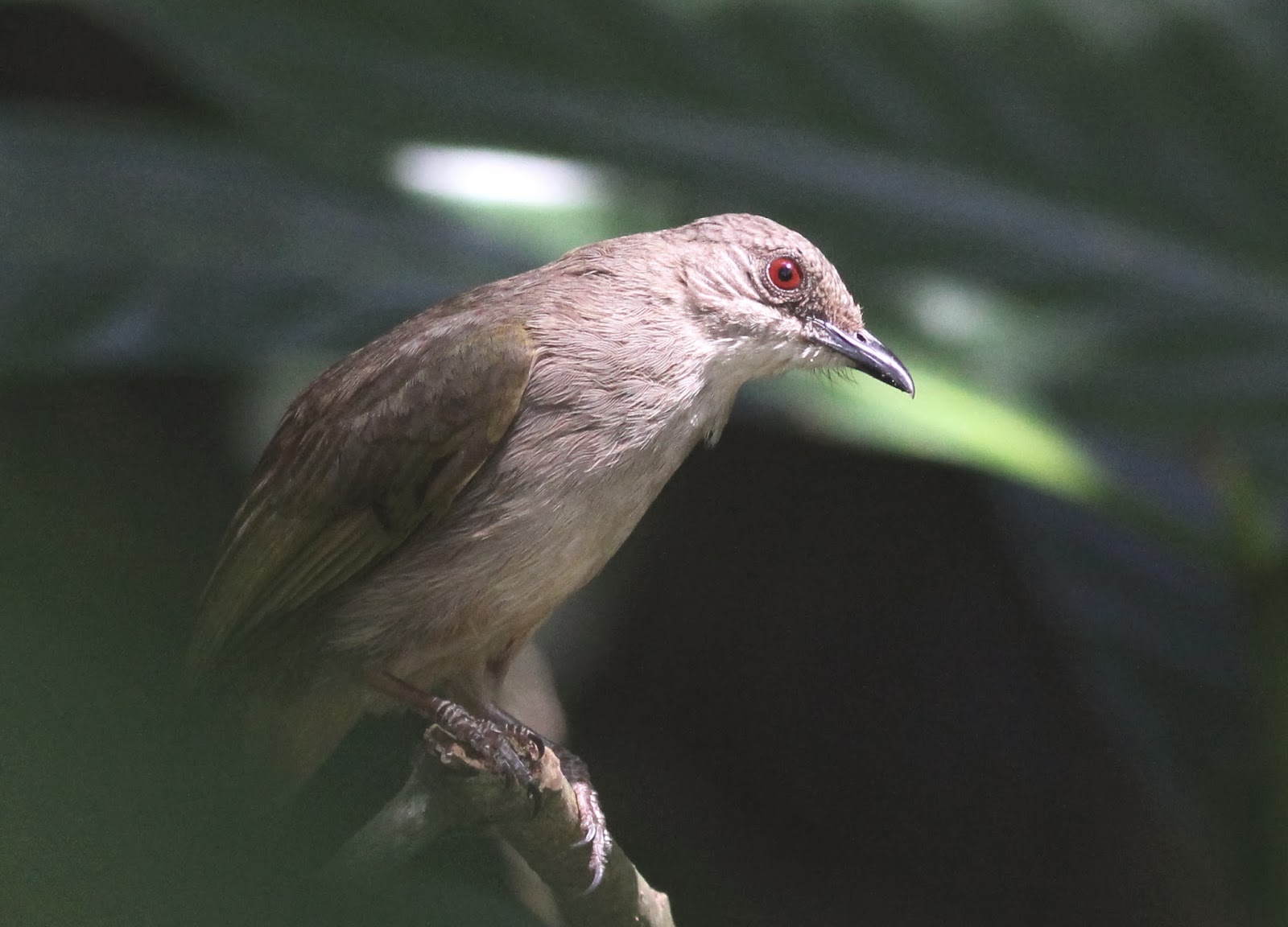Air Itam Dalam FR is located in Sungai Dua which is in the district of Seberang Jaya, Penang. Kubang Semang (which is another favourite birding area among the Penang birders) is also located not too far away from this place. Although this FR was not too big a place to explore but it certainly has an enriching ecosystem supporting various avifauna. In this recent trip which was on the eve of the Chinese New Year celebration, i saw four types of flycatchers i.e Asian Brown Flycatcher, Dark-Sided Flycatcher, Mangrove Blue Flycatcher and the illusive Green-Backed Flycatcher at this location alone.
 |
| Asian Brown Flycatcher |
According to David Wells (1999 - Vol. 1), besides Arctic Warbler, Asian Browns are also one of the non-breeding migrants in this part of the world.
 |
| Dark-Sided Flycatcher |
Here is an expert's affirmation: "Note wing-tip to tail-tip length. Always longer in Dark-Sided as your pictures appear to show. The Asian Browns have shorter wings making the tail looks longer. Note also dusky side of breast and flanks indicating Dark-Sided".
 |
| Mangrove Blue Flycatcher - Male |
 |
| Mangrove Blue Flycatcher - Female |
Both the Mangrove Blue Flycatchers were seen not too far away from each other. They were silent and foraging below the concrete pathway which was probably due to the presence of Black Kites around the vicinity at that time. Really smart couple !
Here is the biggest catch of the day: "Green-Backed Flycatcher"
 |
| Green-Backed Flycatcher (F. elisae) |
After tired of walking i sat on the stairs facing the car park area watching some Ashy Minivets foraging when i heard a familiar "trrt" calls of a flycatcher. I decided to look for the bird even though thinking initially that it could had just been a mangrove blue. In the thick dark foliage on top of a low tree there it was foraging alone. Apparently this flycatcher is an adult male ! I did not thought of recording its calls as i was more anxious of getting its photos at that moment. Its calls were quite similar to other flycatchers except that it did not end with a "tac". According to IUCN records this flycatcher is currently under the "stable" status in the absence of evidence for declines or substantial threats. Nevertheless based on B.i.W record and at "press time" this was the only second recorded sighting at this location after Tan Choo Eng's in Apr 2013.
In addition to the above flycatchers, here were the other birds seen in and around the area:
 |
| Black Kites |
Saw three of them this time. They were all thermaling above and one of the kites was seen teaching another kite (probably a junior) on how to fly - see above photo. After awhile one of them decided to fly down and perched on a tree near the river side.
This was how it looks like when it was about to perch.
 |
| Forest Wagtail |
It was foraging at the car park area and i did not notice it until it moved.
These were Ashy Minivets. Saw five of them this time. Quite a friendly bird species.
 |
| Olive-Winged Bulbul |
A bulbul which had always gave me her best posture.
 |
| Green-Billed Malkoha |
Despite its size and long tail, it could easily maneuver up a tree and among the vines.
 |
| White-Breasted Waterhen |
Although this waterhen species were said to be common but it has been reported that some folks have been "deep-frying" and making "soup" out of it ! Very soon this bird might just go under the "vulnerable" status as well.
 |
| Asian Openbills |
As i was driving out from the FR i stopped at the road side to see a bunch of Asian Openbills thermaling up in the sky. I counted 12 of them and they were thermalling quite high up together with other swallows/swifts. That was about 4.15pm and i reckoned that they might probably be looking for a suitable site to roost. I did not stay on to see whether they were join further by their own clan as i was rushing to another birding site but i believe that these soon to be "fairly common" stork in Peninsular Malaysia will eventually make this place their second home.















No comments:
Post a Comment